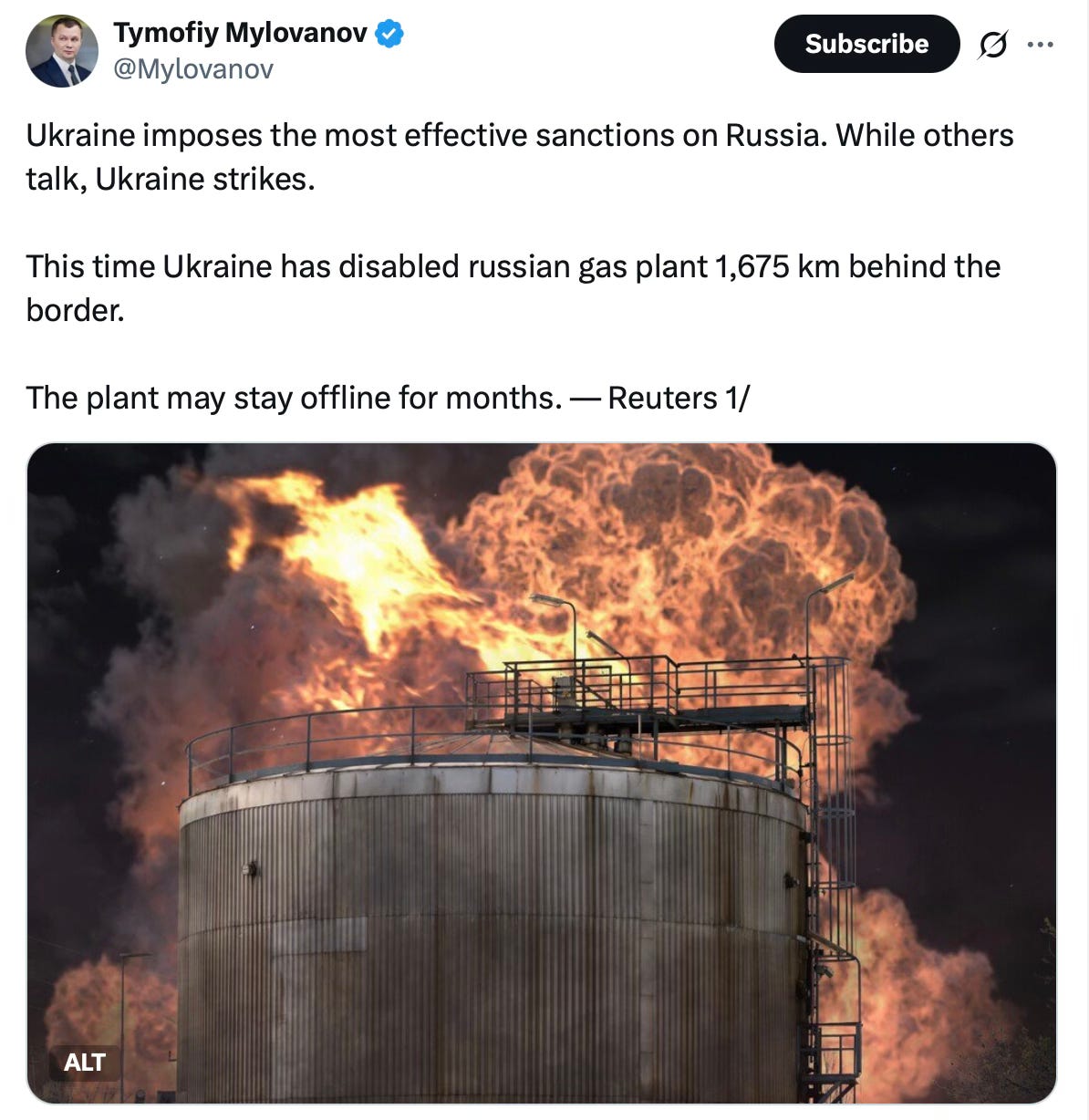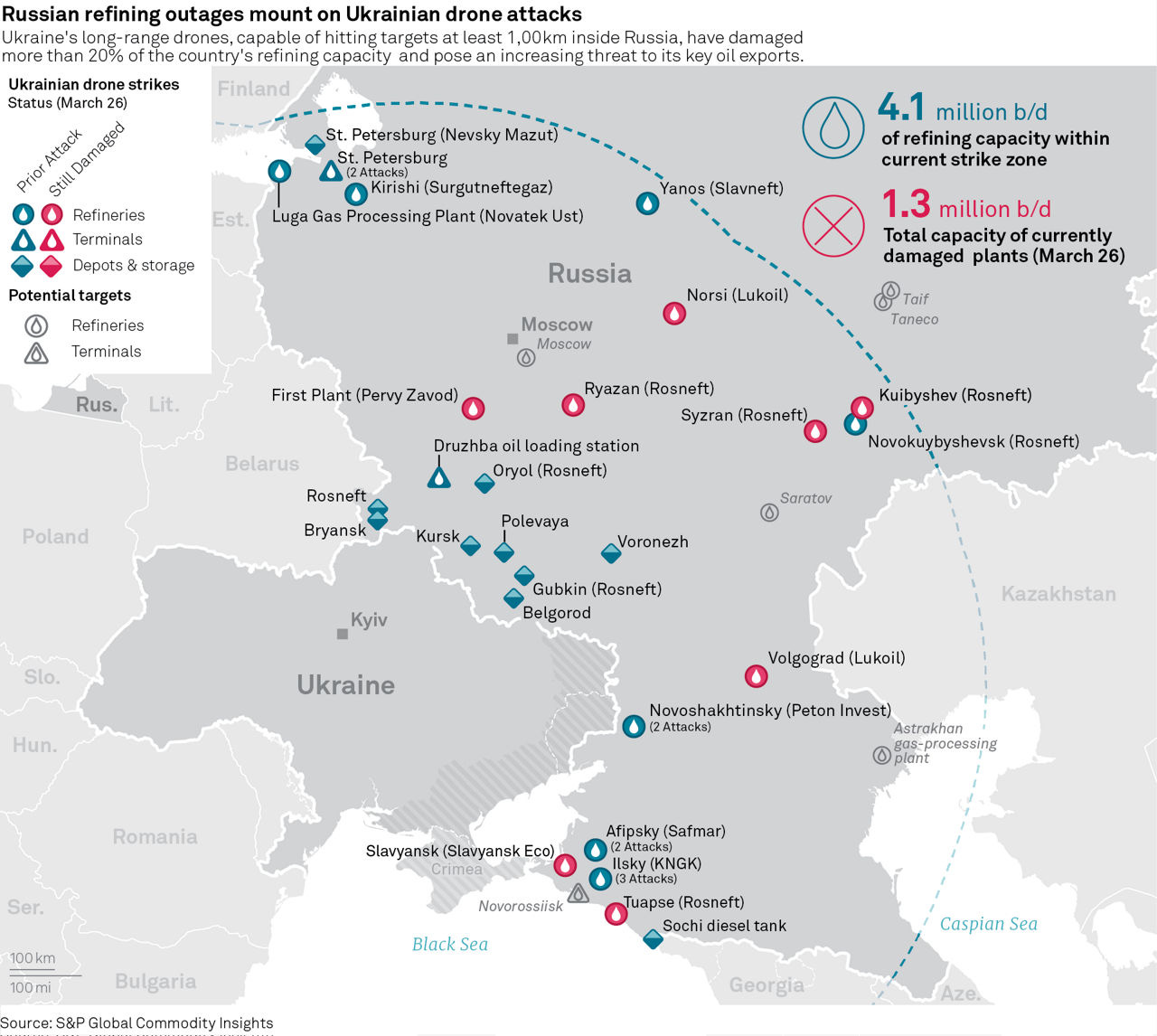Sanctions, Strikes, and the Battle Over Russia’s Oil
The United States imposed new sanctions on Russia’s two largest oil companies, Rosneft and Lukoil, after a planned peace summit in Budapest fell apart last week. The move came just as Ukraine expanded its campaign of drone strikes against Russian refineries and fuel terminals. Together, the timing wasn’t accidental. Washington and Kyiv are targeting the same objective: the oil revenue that funds Russia’s war.
Oil remains Russia’s financial lifeline. Despite two years of fighting and sweeping restrictions on its banking and technology sectors, energy exports continue to bring in tens of billions of dollars each month. That money sustains the ruble, pays for weapons, and underwrites subsidies that keep the domestic economy stable. The new sanctions are intended to shrink those revenues by cutting into the global network that allows Russian oil to move and find buyers.
The White House is pressing other governments to take sides. U.S. officials have increased diplomatic pressure on India, Japan to stop purchases. They’ve also pressured major Gulf producers to increase production to drop oil prices. The insurance, financing, and shipping industries are now leverage points too. The message is clear: continue trading with Russia, and you risk losing access to far larger Western markets. This is economic coercion designed to gradually squeeze Moscow’s export earnings.
Ukraine’s recent actions fit neatly into this strategy. Kyiv’s long-range drones have struck refineries far from the war front in major cities like Ryazan, Volgograd, and Nizhny Novgorod, and several fuel depots on the Black Sea. These attacks have destroyed equipment and disrupted refining capacity in areas that were once considered beyond reach. On social media, Ukrainians often joke how this is applying their own “sanctions”.
There is some truth to the humor. These strikes are not just about destroying the industry outright but also keeping it unreliable by forcing shutdowns, raising shipping and insurance costs, and eroding investor confidence in Russian energy. Each hit on a refinery compounds the effect of sanctions, adding a layer of physical risk to an already strained financial system. Even so, taking 40% of Russian oil production offline doesn’t hurt.
For Moscow, the pressure is mounting. The International Monetary Fund recently cut its forecast for Russia’s 2025 growth to below one percent, citing labor shortages and declining export revenues. Oil remains profitable, but not at the levels needed to sustain heavy wartime spending indefinitely. Russia has rerouted much of its crude toward Asia since losing access to European markets, but even there, the terms are worsening. Buyers in India are paying steep discounts, while China’s state refiners have slowed purchases, wary of secondary sanctions. The discounts eat into Russia’s budget just as costs on the battlefield continue to rise.
The energy routes themselves are changing. Washington and its European partners have been working quietly to redirect oil from Central Asia and the Caspian Sea away from Russian pipelines. Kazakhstan and Azerbaijan are expanding links to the Black Sea and Mediterranean that bypass Russian territory, supported by Western investment in transport and port infrastructure.
For years, Central Asian crude relied heavily on Russian transit; now those flows are beginning to shift south and west, through Azerbaijan and Turkey. These alternatives don’t eliminate dependence on Moscow overnight, but they signal a long-term reordering of the region’s energy map—one that isolates Russia’s network as others open.
It also puts a dent in Russia’s decades-long effort to reintegrate the former Soviet republics into an economic union.
Inside Russia itself, the economic effects are uneven. The ruble has stabilized for now, but inflation is rising, and the government’s reserve funds are being drawn down to cover military wages and equipment. Putin’s government continues to insist that sanctions have failed, yet each new restriction and attack on infrastructure adds friction to a system already running at its limits. Soon the Russian people will start to feel the heat.
For Ukraine, the strategy is showing modest success. Russian fuel shortages have begun to appear in regions near the front, and the need to defend refineries deep inside Russian territory forces Moscow to divert air defenses away from combat zones. Ukrainian officials have said little publicly about coordination with the U.S., but the parallel timing of sanctions and strikes suggests an informal understanding: Washington constrains Russia’s revenue abroad while Ukraine targets its production at home.
Whether this campaign can meaningfully shift the war’s trajectory remains uncertain. Russia still finds ways to move oil through shadow fleets and middlemen, often operating under shadow companies. Enforcement is difficult, and global demand for energy gives Moscow room to maneuver. But even with these workarounds, Russia’s oil profits are shrinking, and its economic resilience depends on relationships that come with growing costs and fewer guarantees.
For now, the war grinds on. The front lines in eastern Ukraine have barely moved, but the energy front is active and evolving. Each sanction, each refinery strike, and each rerouted shipment adds up to a quieter contest running parallel to the fighting. The outcome may not decide who holds a particular city, but it will help determine which side can afford to keep fighting longest.





